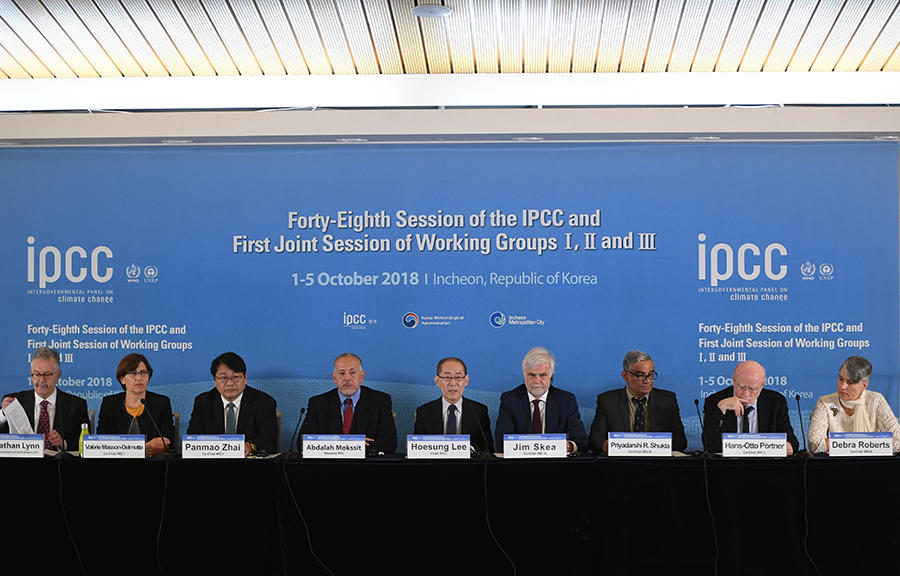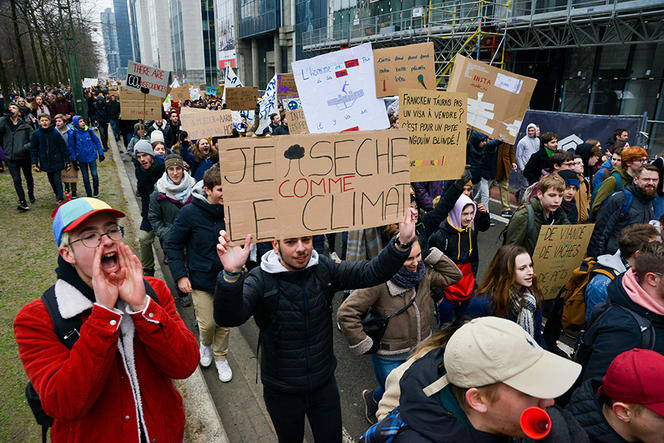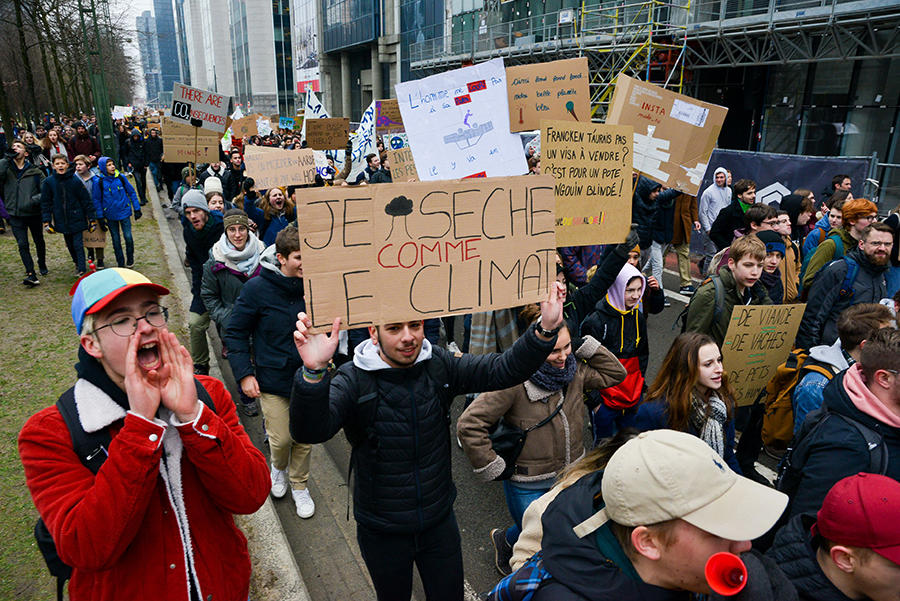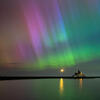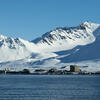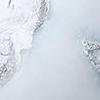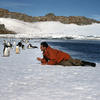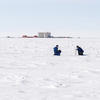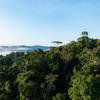You are here
Valérie Masson-Delmotte, a Voice for the Climate
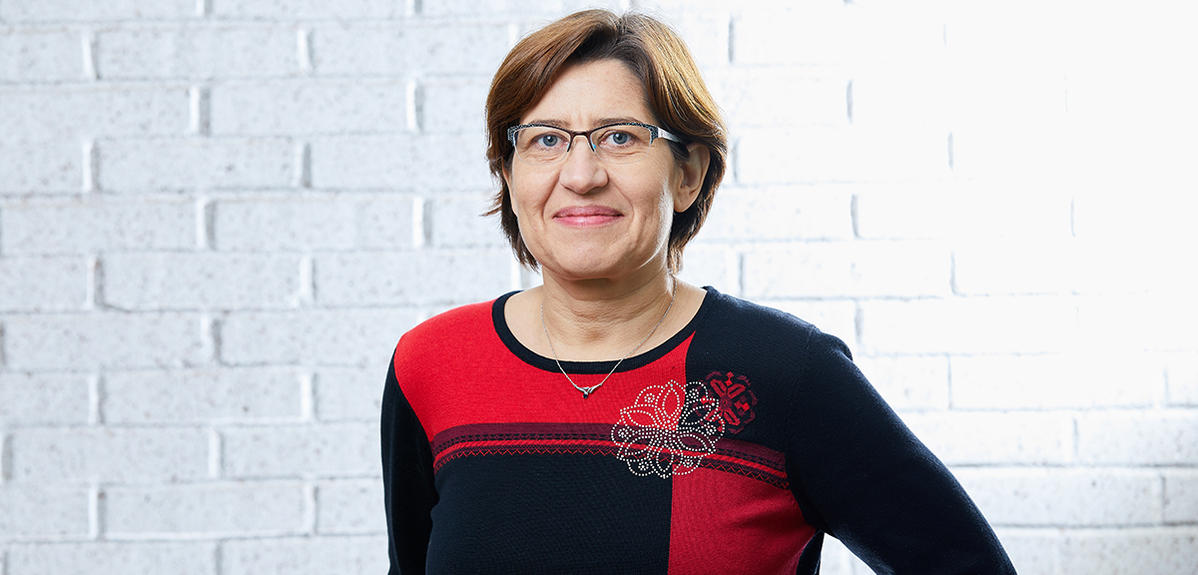
In December 2018, the renowned scientific journal Nature placed Valérie Masson-Delmotte in its list of the ten most influential personalities of 2018. Her merit is to have successfully ensured the completion, in a mere year and a half, of a report on the consequences of global warming limited to 1.5 °C that integrates the content of more than six thousand papers on the subject. At the age of 47, she managed to do this while simultaneously working as senior researcher at the French Alternative Energies and Atomic Energy commission (CEA), having important responsibilities within the Intergovernmental Panel on Climate Change (IPCC) (see box below), and being a member of the recently set up French High Council for Climate Action (HCAC).
So how does the scientist manage to perform all these duties? Her office at the LSCE1 offers few clues. Maps of the polar regions hang on the walls, and a red electric bike stands in a corner. Under the window, an old holiday snap features her with her two little girls. A laptop, a phone and six thick bundles of bound and annotated scientific publications lie on her desk. “My holiday reading for Christmas!,” she smiles. In fact, an initial hint is to be found not in her office but looking out the window, where low clouds are drifting across a dark sky.
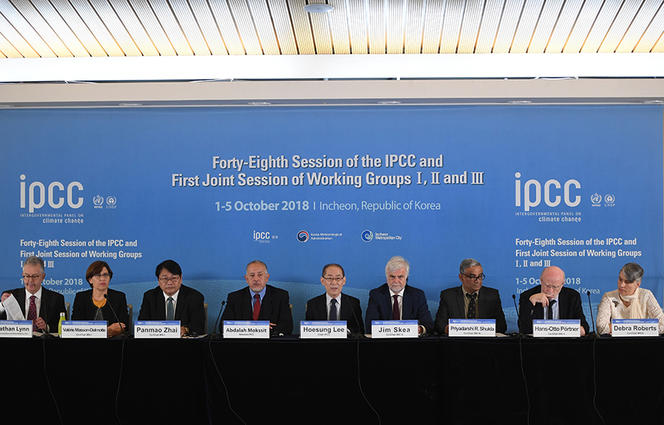
“I’ve always loved to look at clouds. As a child I used to spend hours observing their shapes, which were never ever the same!” From her childhood in Nancy (northeastern France) she has vivid memories of family camping holidays, and of being in contact with nature. “It was in the days before video games, when we could allow ourselves the luxury of being bored.” Although the young Valérie Masson may have had her head in the clouds, she also had her feet firmly on the ground, which she dreamt of excavating: she wanted to become an archaeologist. However her parents, who were English teachers, advised her against it, since there were few job prospects in the discipline.
So she decided to study science, took courses in advanced maths, and joined the Ecole Centrale Paris, a prestigious engineering and science higher education institution. “An engineering school is rather like a river,” she explains. “Once you’re in, you just let yourself drift until you obtain your diploma, and then enter the world of business.” A tragic event was to change the course of her life though: her younger brother died of leukaemia at the age of 16. "At that moment, I realised that life could be very short, that you shouldn't waste any time, and follow the path you were meant for.”
But which path was it to be? The young engineering student went through her papers and came across an old magazine that she’d kept from her days at secondary school, a science journal that talked about greenhouse gases and the first attempts at modelling the climate. Reading about this research took her back to the clouds of her childhood, and she made up her mind: she would become a climatologist. She immediately got in touch with the climatologist and glaciologist Jean Jouzel, whose work was cited in the journal. “She wanted me to supervise her doctoral thesis,” Jouzel remembers, “but it was impossible because I had just accepted a new PhD student.”
Fortunately, in the CNRS/CEA Joint Research Unit he headed at Saclay, which was later to become the Laboratory for Sciences of Climate and Environment (LSCE), another thesis supervisor, Sylvie Joussaume, was able to take her on. The subject of her thesis was a comparison of simulations of past climates with evidence from natural records in order to assess the capacity of climate models.
Heading North
From then on, things went fast. In 1993, she obtained her Diploma at the Ecole Centrale Paris and embarked on her PhD thesis. In 1996, she secured her PhD in energetics, fluid dynamics and energy transfer. She joined the CEA the same year to work with Jean Jouzel before becoming head of the Ice and Continents, Climates and Stable Isotopes (GLACCIOS) team at the LSCE in 1998. In 2000, she married Marc Delmotte, the student that Jouzel had just taken on when she first contacted him, and changed her name to Valérie Masson-Delmotte. They had two daughters. In 2008, she was appointed senior researcher.
"I loved the years of research in GLACCIOS," the scientist says. One of the team's areas of expertise was the study of ice cores from polar ice. In these regions, snow builds up in successive layers and then turns into ice. The water and air it contains hold valuable information about the climate, which is recorded at the time of the snowfall. By collecting ice core samples at increasing depths, it is possible to go back in time and reconstruct the climate as it was several hundred thousand years ago. “I was lucky enough to take part in two missions to Greenland, in 1997 and 2008. On our second trip, our whole family took part! I was working on the ice sheet in northwest Greenland. My team and I were living in a camp at an altitude of 3 000 metres, in the middle of nowhere. My husband Marc was on the southern coast, where he was helping to set up an atmospheric monitoring station for greenhouse gases.
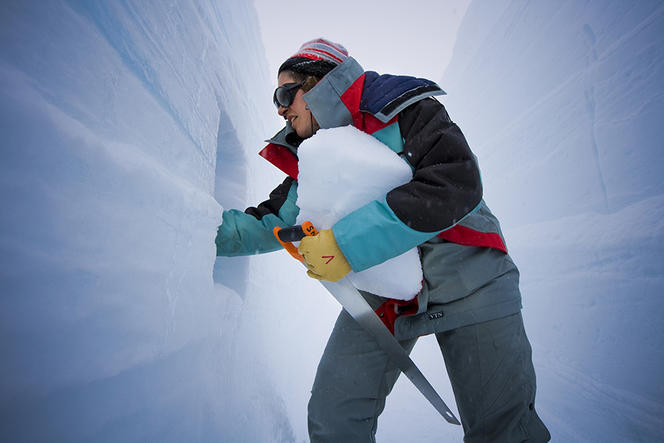


He was able to take our daughters with him, and we subsequently met up for an Arctic holiday. Aged 8 and 10, our girls discovered unspoiled nature, and approached animals that weren’t scared of humans, since they had hardly ever seen any before.”
Multimedia climatologist
Shortly after her return, Valérie Masson-Delmotte, together with two colleagues from the LSCE, Jean Jouzel and Didier Hauglustaine, co-wrote the book Atmosphère, Atmosphère, about the history of scientific research in the polar regions. Science outreach is another facet of her work: “My salary is paid thanks to the taxes of people who are often in a more difficult situation than I am. Right from the start of my career, I realised that I had to get out of my lab and meet them, tell them what climatology was all about, and how it affected their daily lives.”
Since 2003, she has co-authored some ten books for young readers and adults on the climate, global warming, and Greenland. "Writing for youngsters is excellent training: it forces you to be both clear and inspiring. The worst criticism I ever received was in a school, when a child told me, “At first it was great, it was like a novel. But then I quickly realised it was just a documentary…”
In order to share her knowledge, the climatologist visits classrooms, takes part in radio programmes, and even participates in meetings in shopping centres. "And she does it very well," says Jouzel. “She is both extremely brilliant and very straightforward in the way she speaks, very clear.”
Not to mention Twitter, where she shares information several times a day with her five thousand subscribers, whether it’s about an international conference on forests, cycling in the Essonne (a region south of Paris where she lives), or the activities of the IPCC in which she takes part.
Climate change and its impacts
"I first came across the existence of the IPCC reports while working on my thesis, when I was looking for information about climate change in Europe. Over the years, I became increasingly involved in the Panel’s work.” After participating as an author in its fourth Assessment Report, Valérie Masson-Delmotte coordinated the chapter on past climates in the fifth volume, and was then elected co-chair of Working Group One for the sixth Assessment Report, to be published in 2021. And it was for a special review, commissioned in 2015 at the COP21FermerThe Conferences of the Parties (COPs) are annual meetings where the signatory countries of the United Nations Framework Convention on Climate Change meet to discuss the fight against climate change. The COP25 will be held in Santiago de Chile in early 2020. and published in October 2018, that she was honoured by the journal Nature. "Although it was in my name, it was the collective work of the co-chairs of the three Working Groups and of 91 authors from 40 different countries, together with the support provided by the technical support units, that were recognised," she insists.
The report focused on a key question: with global temperatures already having risen by 1 °C due to human activity since the industrial revolution in the nineteenth century, what impact would an increase of 1.5 °C have? What risks could be avoided if warming were stabilised at 1.5° C, in comparison with a temperature rise of 2 °C? What scenarios would enable greenhouse gas emissions to be kept at a level that would be compatible with such stabilisation? How can this be achieved? What links are there with sustainable development and efforts to eradicate poverty?
"For instance, modelling shows that heat waves will be more extreme, which will reduce grain yield," the climatologist explains. “We will need to adapt to this by making the best use of available water and finding more resistant seeds. However, this must begin right now, since there isn’t much time left: the 1.5 °C increase will be reached at some point between 2030 and 2050. In addition, if we want temperatures to stabilise at this level, global CO2 emissions will need to be halved by 2030 and reach zero emissions by 2050. It's not impossible, but the window of opportunity is narrow. Every year, every half degree, every choice counts. By paying particular attention to those most vulnerable to climate change and to the actions required to reduce greenhouse gas emissions, we can undertake transitions that are both ethical and fair.”
Active champion of the climate cause
The urgency of the situation has prompted Valérie Masson-Delmotte to gradually shift from the role of observer to that of an active defender of the climate cause, as for instance, after the failure of the COP15 in Copenhagen. “The Heads of State hadn’t managed to reach an agreement and the climate sceptics were on a roll,” she recalls. Claude Allègre (Editor’s note: a French geochemist, politician and notorious climate sceptic), who had just published a book full of false claims about the climate, was the darling of the media. Research by climate scientists was systematically disparaged.”
One day, the French broadcaster Guillaume Durand invited her to take part in a programme in which the main guest was none other than Allègre. “I don’t like television and I can’t stand the constant search for sound bites,” she admits. But she felt that it was her duty to confront the geochemist and his inconsistencies. “I prepared for the programme as if for a bout of judo, a sport that I used to practice: when you face a heavier opponent, you have to be the smartest." And, looking at a replay of the show, there can be no doubt that she succeeded perfectly. Confronted by an excitable Allègre, she remained calm and clear, turning the former minister’s arguments back against him. “You have to be clever to do that,” says Jouzel admiringly, “and she did it!”
A few days later, Valérie Masson-Delmotte drove the point home when she initiated the “Appeal of the 600”, which made the front pages of the French dailies Libération and Le Monde. In an open letter to the then Minister of Research, Valérie Pécresse, climatologists demanded that a wide-ranging debate be held in order to review the state of knowledge about climate change. Held at the French Academy of Sciences in October 2010, it clearly confirmed the impact of humans on the global climate and the rigorous nature of climate science research.
A light footprint on the world
Since then, although climate scepticism has decreased sharply in France, Valérie Masson-Delmotte's battle has continued on other fronts. For instance, she is one of the thirteen members of the HCAC, set up in November 2018 on the model of the UK’s Committee on Climate Change, which is to provide independent advice on the government’s climate policy, and especially on its compliance with the Paris Climate Agreement.
Another key issue for her is the importance of educating youngsters about climate change. “I can sense a groundswell, especially among young people, who are aware of global warming and want to save the environment. Currently, however, education about climate change, the keys to understanding its challenges, the extent of the transformations required in order to cope with them, and the collapse of biodiversity, is woefully inadequate in primary and secondary schools. It would be very sensible to allocate around ten hours per year to the issue, across different disciplines, so as to provide schoolchildren with an overview of the problem, and get them to think about collective and individual responsibility, our consumption patterns, and so on.”
On a personal level, the climatologist advocates “happy sobriety” (Editor’s note: a notion developed by the French writer and environmentalist Pierre Rabhi): she uses her electric bike to travel the ten kilometres between her laboratory and her village in the Essonne département, where she was an independent local councillor for seven years. Her family practise permaculture, make their own compost and try not to fall victim to consumerism. “I’ve calculated our carbon footprint for years. I would like to leave a light one on the world,” she concludes.
So what’s the secret that enables her to do so many things at once? “She does things fast,” her husband explains. “She reads quickly, whether it’s scientific articles or novels. She’s always active and alert. Even when she cooks she doesn’t hang about! This can actually be something of a shortcoming: she finds it hard to relax, both in the evenings and at weekends.”
Valérie Masson-Delmotte may wish to “leave a light footprint on the world”. But there can be little doubt that, at this rate, she will leave a long-lasting one in the world of climatology.
___________________________________________________________
What is the IPCC?
Set up in 1988, the Intergovernmental Panel on Climate Change (IPCC) relies on two United Nations (UN) bodies: the World Meteorological Organization and the United Nations Environment Programme. Its mission is to provide a methodical, unbiased assessment of scientific, technical and socio-economic advances that shed light on the mechanisms and risks of human-induced global warming, as well as the strategies to be developed to mitigate or adapt to it. The IPCC is not therefore a research organisation: it is a group of international experts who summarise the state of existing knowledge based on an in-depth evaluation of the scientific and technological literature, thus forming a scientific basis common to all governments which, albeit non prescriptive, is nonetheless useful for informing political decision-making.
The IPCC is made up of three Working Groups: Working Group 1 deals with the physical science basis of climate change; Working Group 2 with climate change impacts, adaptation and vulnerability; and Working Group 3 with mitigation of climate change. From 1990 to 2014, the IPCC published five Assessment Reports. The next one will be released in 2021. In 2007, the IPCC was awarded the Nobel Peace Prize, jointly with former US Vice President Al Gore.
- 1. Laboratoire des sciences du climat et de l’environnement (CNRS / CEA / Université de Versailles Saint-Quentin-en-Yvelines).
Author
Holding both an engineering degree and an MA in art history, Philippe Nessmann has three passions: science, history and writing. As a journalist, he regularly contributes to Science et Vie Junior, Ciel et Espace, le journal du CEA... He is also a published author of over fourty books aimed at a young audience, including historical novels (coll. Découvreurs du...


